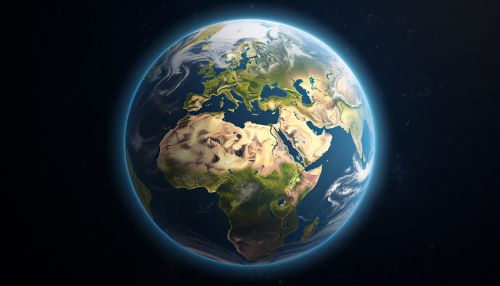Physical Geodesy
Introduction
Physical geodesy is the study of the physical properties of the Earth's shape, gravitational field, and rotation. It is a branch of geodesy, which is the scientific discipline that deals with the measurement and representation of the Earth. Physical geodesy is concerned with the Earth's gravity field, geoid, and Earth rotation parameters (ERP).


Earth's Shape and Size
The Earth is not a perfect sphere but an oblate spheroid, meaning it is flattened at the poles and bulging at the equator. This shape is due to the Earth's rotation. The study of the Earth's shape and size is a fundamental part of physical geodesy. The shape and size of the Earth are described by the Earth's radius, equatorial radius, and polar radius. The Earth's radius varies depending on the location on the Earth's surface due to the Earth's oblate spheroid shape.
Gravitational Field
The gravitational field of the Earth is the force that the Earth exerts on an object at a certain distance from its center. The gravitational field is not uniform across the Earth's surface due to the Earth's shape and the distribution of mass within the Earth. The study of the Earth's gravitational field is a major part of physical geodesy. The gravitational field is measured using gravimeters, which measure the acceleration due to gravity.
Geoid
The geoid is a hypothetical shape of the Earth that is defined by the Earth's gravitational field. It is the shape that the ocean surface would take under the influence of gravity alone, if other influences such as winds and tides were absent. The geoid is a reference surface for geodetic measurements and is used to define the Earth's mean sea level. The study of the geoid is a fundamental part of physical geodesy.
Earth Rotation Parameters (ERP)
Earth rotation parameters (ERP) are parameters that describe the rotation of the Earth. They include the Earth's rotation rate, the orientation of the Earth's rotation axis, and the position of the Earth's rotation pole. The study of ERP is a fundamental part of physical geodesy. ERP are determined from observations of celestial bodies and artificial satellites.
Methods of Physical Geodesy
Physical geodesy uses a variety of methods to study the Earth's shape, gravitational field, and rotation. These methods include satellite geodesy, gravimetry, and geodetic astronomy. Satellite geodesy involves the use of artificial satellites to measure the Earth's shape and gravitational field. Gravimetry is the measurement of the strength of the Earth's gravitational field. Geodetic astronomy involves the observation of celestial bodies to determine the Earth's rotation parameters.
Applications of Physical Geodesy
Physical geodesy has many applications in fields such as geophysics, oceanography, and navigation. In geophysics, physical geodesy is used to study the Earth's interior and tectonic processes. In oceanography, physical geodesy is used to study sea level changes and ocean circulation. In navigation, physical geodesy is used to provide accurate positioning and timing information.
